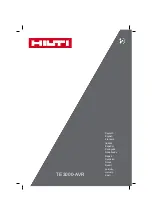
Failure to use push blocks when sur-
face planing may result in cutterhead
contact, which will cause serious per-
sonal injury. Always use push blocks to
protect your hands when surface plan-
ing on the jointer.
Figure
22
. Example of a typical surface
planing operation.
Removed
Surface
-24-
Model W1876 (For Machines Mfd. Since 7/20)
O
PE
R
ATIO
NS
Surface.Planing
The purpose of surface planing (see
Figure
22
) on the
jointer is to make one flat face on a piece of stock to
prepare it for thickness planing on a planer.
To.surface.plane.on.jointer,.do.these.steps:
1.
Inspect stock to ensure it is safe and suitable for the
operation (refer to
Stock.Inspection
on
Page 21).
2.
Set infeed table height to desired cutting depth for
each pass.
.CAUTION:
To minimize risk of kickback, do not
exceed a cutting depth of
1
⁄
16
" per pass when surface
planing.
3.
Set fence to 90°.
4.
Start jointer.
5.
Place workpiece firmly against fence and infeed
table with concave side facing down, as shown in
Figure.22
.
.CAUTION:
To ensure workpiece remains stable
during cut, concave sides of workpiece must face
toward table and fence.
6.
Feed workpiece completely across cutterhead while
keeping it firmly against fence and tables during the
entire cut.
.CAUTION:
Keep hands at least 4" away from
cutterhead during the entire cut. Instead of allowing
a hand to pass directly over cutterhead, lift it up
and over cutterhead, and safely reposition it on the
outfeed side to continue supporting workpiece. Use
push blocks whenever practical to further reduce
risk of accidental hand contact with cutterhead.
7.
Repeat
Step.6
until entire surface is flat.
Tip
:
When squaring up stock, cut opposite side of
workpiece with a planer instead of the jointer to
ensure both sides are parallel.
Содержание W1876
Страница 52: ......
















































